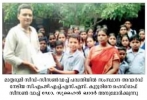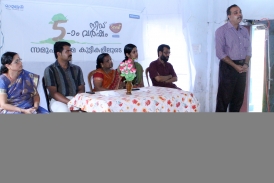Season Watch
SEED in association with Wipro and National Centre for Biological Sciences (NCBS), Bangalore initiated a novel idea called “Seasonwatch”. Through, Seasonwatch school children monitor the seasons as revealed by trees.
Why SeasonWatch
All of us have observed how the annual temperature and rainfall patterns in the country are changing rapidly. Along with the seasons, the flowering and fruiting patterns of common trees like the Mango and Amaltas also appear to be changing every year. But these are just impressions and are not based on solid information from across the country.
With SeasonWatch we hope to fill this gap in with what we know. By systematically recording the changing patterns of plant life, and understanding how climate affects their lifecycle, we can work together with Nature to conserve her bounty.
Also, the seasonal cycles can be fascinating to observe, as well as reveal a whole new world of micro-cycles within them! Here is an example of a chain of ecological interactions that depends on the seasonal resources trees provide:
• Caterpillars and monkeys eat fresh leaves.
• Bees and butterflies flit over the flowers for nectar, and pollinate the flowers while they do so.
• Birds, squirrels, bats and people eat the fruit.
Monitored Trees
Some of the trees being monitored under SeasonWatch are Jackfruit (Kathal), Indian Blackberry (Jamun), Pride of India (Jarul), Indian Gooseberry (Amla), Mango (Aam), Banyan (Bargad), Devil’s Tree (Saptaparni), Purple Bauhinia (Kaniar), Indian Coral Tree (Pangra), Flame of the Forest (Dhak/Palash), Indian Laburnum (Amaltas), Pongam Tree/Indian Beech (Karanj), Tamarind (Imli), Margosa (Neem), Flame Tree (Gulmohur), Red Silk Cotton Tree (Semul).
Can you recognize all these beautiful trees of India? This is not the complete list but after you register, you can learn how to recognize and relate to all these SeasonWatch trees.
Who's Involved
SeasonWatch is part of the Citizen Science program at the National Centre for Biological Sciences (NCBS), the biological wing of the Tata Institute of Fundamental Research (TIFR). Nature Conservation Foundation (NCF) an NGO that does pioneering work in conservation biology in various ecosystems across India provides valuable expertise and support to the program. SeasonWatch is funded by Wipro Applying Thought in Schools (WATIS), the division of Wipro that works extensively with many NGOs across India on educational reforms in schools.
Explore the Results
All the observations that are part of the SeasonWatch database become interesting when you can play around with them. This means that you can ask interesting questions and studying the SeasonWatch observations data can discover your own answers. (remember that this is an open-source project and ALL participants get full access to ALL data). Once the observations start flowing in, combining them with other information available in the public domain, you can possibly get answers to questions like:
• How does the flowering time of Neem change across India?
• Is fruiting of Tamarind different in different parts of the country depending on rainfall in the previous year?
• Is year-to-year variation in flowering and fruiting time of Mango related to winter temperatures?


















